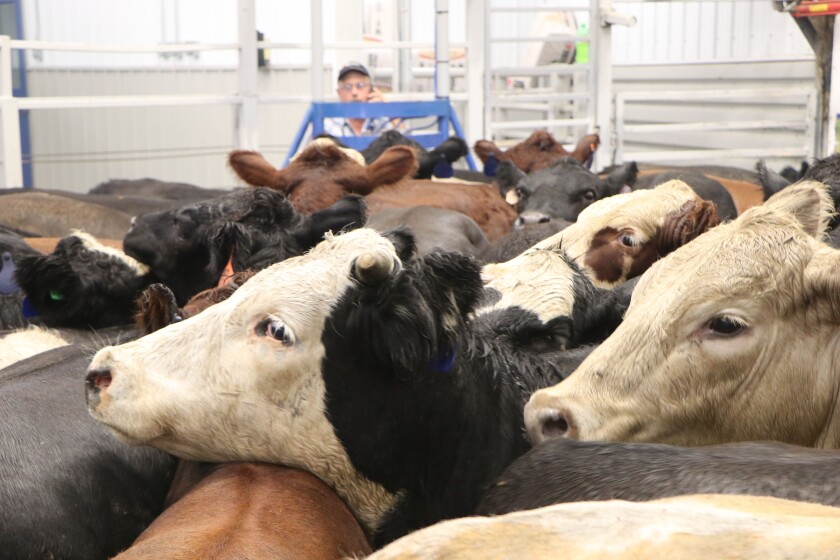Boost Your Proficiency with Bagley Risk Management
Boost Your Proficiency with Bagley Risk Management
Blog Article
The Benefits of Animals Risk Defense (LRP) Insurance Coverage Explained
Animals Risk Protection (LRP) insurance coverage serves as an essential tool for livestock producers navigating the unpredictable terrain of market fluctuations and unexpected losses. The true value and complexities of this insurance instrument go far beyond simple security-- they embody a proactive method that can redefine the landscape for livestock producers.
Financial Defense Versus Market Volatility

LRP insurance policy gives manufacturers with a beneficial device to handle rate risk, supplying insurance coverage that can assist counter potential losses resulting from negative market activities. In significance, LRP insurance coverage serves as a proactive threat administration strategy that encourages livestock producers to browse the challenges of a vibrant market landscape with higher confidence and safety.
Protection for Unforeseen Losses
Animals Risk Protection (LRP) insurance supplies comprehensive protection to protect animals manufacturers against unexpected losses in the unstable market landscape. This insurance policy gives protection in cases where unforeseen occasions such as disease episodes, natural calamities, or substantial market value variations can result in economic challenges for animals producers. By having LRP coverage, producers can reduce the dangers related to these unpredicted scenarios and make certain a level of financial security for their procedures.
Among the vital advantages of LRP insurance coverage is that it permits manufacturers to tailor their insurance coverage based on their specific needs and risk tolerance. This versatility allows producers to tailor their policies to safeguard against the sorts of losses that are most appropriate to their operations. Furthermore, LRP insurance coverage uses a simple cases process, aiding manufacturers swiftly recuperate from unforeseen losses and resume their operations without substantial disturbances.
Danger Monitoring for Livestock Producers

One secret element of threat monitoring for livestock manufacturers is diversity. By diversifying their livestock profile, manufacturers can spread threat across different varieties or breeds, reducing the influence of a potential loss in any type of solitary location. Furthermore, maintaining in-depth and exact documents can aid manufacturers recognize patterns, fads, and potential areas of danger within their operations.
Insurance policy products like Livestock Risk Security (LRP) can likewise play an essential role in threat management. LRP insurance supplies manufacturers with a security internet versus unforeseen cost decreases, using them satisfaction and monetary safety in times of market instability. Generally, a thorough threat administration method that integrates insurance, diversification, and record-keeping can assist livestock manufacturers successfully navigate the challenges of the industry.
Tailored Plans to Fit Your Needs
Customizing insurance coverage to align with the details demands and circumstances of animals producers is paramount in ensuring comprehensive threat administration strategies (Bagley Risk Management). Animals producers encounter home a myriad of difficulties distinct to their sector, such as changing market value, unpredictable weather patterns, and pet wellness problems. To resolve these threats successfully, insurance policy suppliers use customized policies that satisfy the diverse needs of animals producers
One trick aspect of tailored animals insurance coverage is the ability to customize coverage limits based upon the size of the operation and the sorts of livestock being elevated. This flexibility makes sure that producers are under-insured or not over-insured, enabling them to shield their assets adequately without paying for unneeded insurance coverage.
Furthermore, customized plans might likewise consist of specific provisions for different kinds of livestock operations, such as milk farms, ranches, or chicken producers. By tailoring insurance coverage to suit the distinct attributes of each procedure, insurance providers can provide detailed defense that addresses the certain threats faced by various types of livestock manufacturers. Ultimately, picking a tailored insurance coverage can supply satisfaction and monetary security for livestock producers despite unexpected obstacles.
Government-Subsidized Insurance Options
In taking into consideration danger monitoring techniques customized to the particular needs of animals producers, it is necessary to check out the Government-subsidized insurance policy choices readily available to reduce economic uncertainties successfully. Government-subsidized insurance alternatives play an essential role in offering economical threat administration devices for livestock producers.
One famous instance of a government-subsidized insurance coverage alternative is the Animals Risk Security (LRP) program, which gives protection against a decline in market rates. Through LRP, producers can insure their animals at a specific protection degree, hence guaranteeing a minimal rate for their animals at the end of the insurance coverage duration. By leveraging these subsidized insurance policy options, animals manufacturers can improve their economic safety and security and stability, inevitably contributing to the durability of the farming field overall.
Conclusion

Finally, Animals Danger Security (LRP) insurance offers economic security against market volatility and unexpected losses for livestock manufacturers. It offers as a useful danger administration tool, with tailored plans to match specific requirements. Government-subsidized check it out insurance coverage options further boost her comment is here the accessibility and cost of LRP insurance policy for manufacturers. Take into consideration LRP insurance policy as a calculated investment to safeguard your animals procedure versus possible threats and unpredictabilities in the market.
Livestock Danger Defense (LRP) insurance coverage offers as a vital device for livestock manufacturers browsing the unpredictable surface of market variations and unexpected losses.In today's uncertain market environment, livestock producers can profit considerably from safeguarding financial security versus market volatility via Livestock Risk Security (LRP) insurance policy. In significance, LRP insurance coverage offers as an aggressive threat management technique that equips animals manufacturers to browse the challenges of a dynamic market landscape with higher self-confidence and protection.
Animals Risk Protection (LRP) insurance coverage uses thorough insurance coverage to safeguard livestock producers against unexpected losses in the unstable market landscape.In verdict, Animals Danger Protection (LRP) insurance coverage offers financial protection against market volatility and unforeseen losses for livestock producers.
Report this page